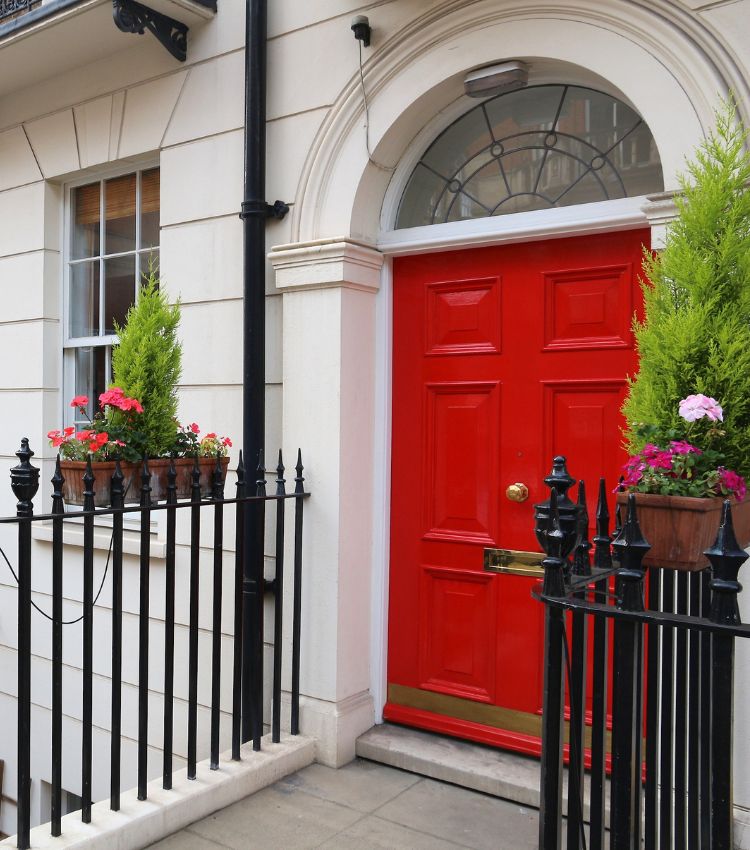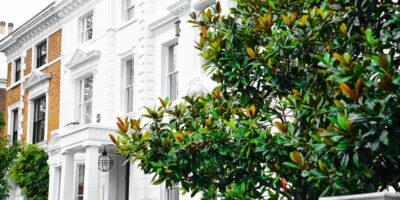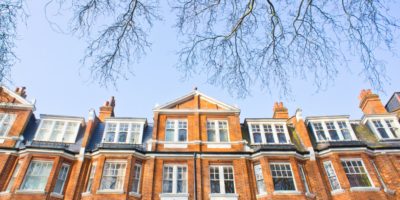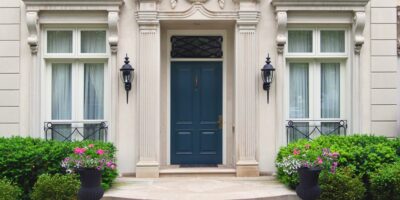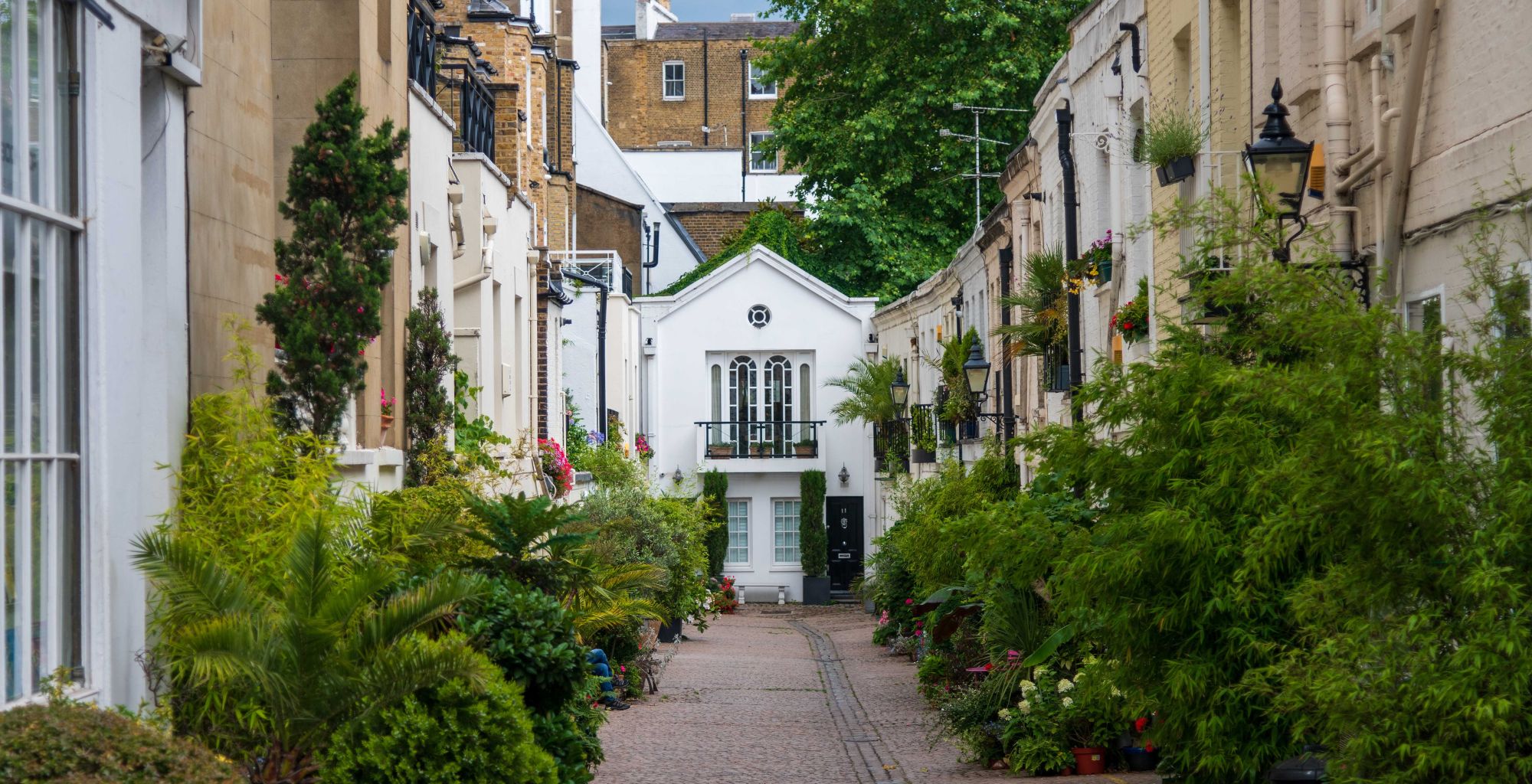
London Mews Houses
London mews houses are steeped in charm and appeal. An attractive feature of the city’s architecture, these quaint properties, often in secluded cobbled streets, are highly desirable for homebuyers.
Located in some of London’s most prestigious neighbourhoods, London mews houses offer a peaceful retreat from the hustle and bustle of city life.
A large number of mews buildings have been converted into stylish homes, retaining original features such as stable doors and exposed brickwork, while also incorporating all the amenities required for modern living.
Mews houses are a relatively niche market with only a limited number available for sale or rent at any given time. Their character and history makes them highly coveted and extremely sought-after.
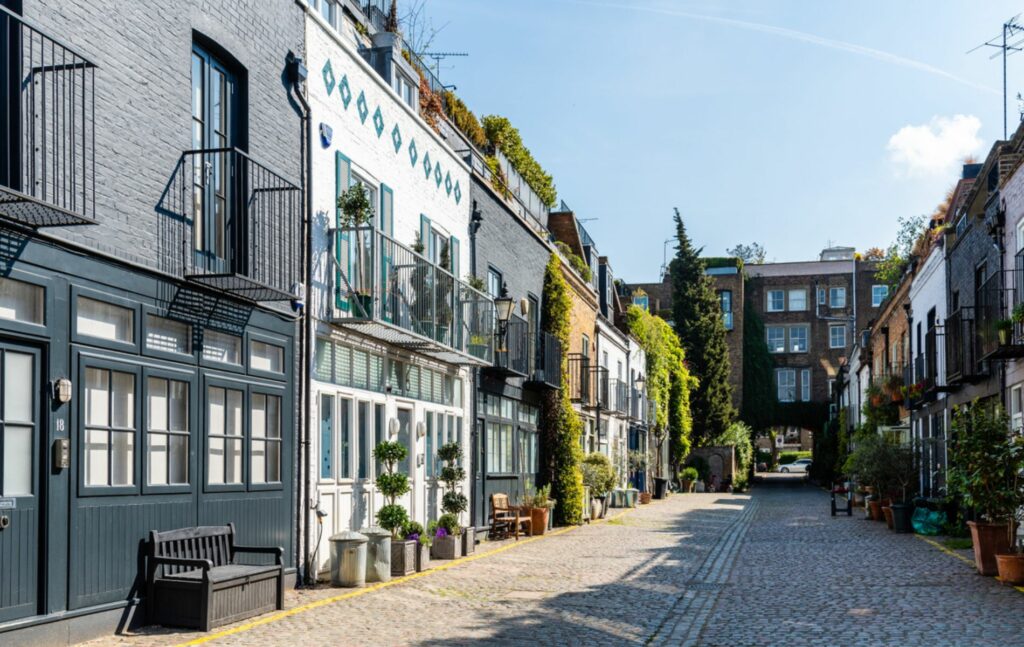
A Brief History of London Mews Houses
With a rich history that dates back to the 18th and 19th centuries when horse-drawn carriages were the primary mode of transportation for the wealthy.
With many being built hundreds of years ago, London mews houses are often prime examples of period property, though are modernised from their original purpose and offer an eclectic mix of old and new.
Mews were originally built as service streets or courtyards at the rear of large and prestigious townhouses and contained rows of stables and carriage houses with living quarters above for the coachmen and stable hands. You will therefore find them in some of the most affluent parts of London.
As the popularity of motor vehicles grew in the early 20th century, and as the use of carriages declined, mews buildings were repurposed into garages and homes.
Today, mews houses are an attractive and nostalgic reminder of London’s history and beautiful places to live.
Architectural Features
The distinctive and appealing architectural features of London mews houses include being in a terraced row situated on a cobbled or sett-paved street, having a narrow frontage and being two or three stories high, often with a garage on the ground floor and living accommodation above.
Characteristics tend to include large windows and skylights giving lots of natural light, and an innovative use of the space, which is typically compact.
While many mews houses have open-plan living areas creating a sense of spaciousness, others benefit from clever storage to maximise the use of space.
Where to Find Mews Houses in London
Offering a special blend of nostalgia, charm, and exclusivity, mews houses are some of the most sought-after properties in the city,
Because mews were mostly built to serve the homes of the wealthy in the most prosperous areas of London, mews houses are still to be found in the most desirable locations in the city, including Kensington, Chelsea, Belgravia, Notting Hill, and Marylebone.
Kensington
Kensington is one of London’s most affluent areas and is home to some of the city’s most exclusive mews houses.
Kensington is also known as the location of the Natural History Museum, the Science Museum, and the Royal Albert Hall.
Kensington High Street is the main shopping area with a mix of high-end boutiques and high street stores.
Located just a stone’s throw from Kensington Gardens and Hyde Park, mews houses offer a balance of green spaces, culture, and access to a range of amenities.
Chelsea
Chelsea, on the north bank of the River Thames, is another prime location for mews houses, with many situated near to the fashionable King’s Road, one of London’s premier shopping streets, with its smart boutiques, high street stores, and high-end restaurants.
Chelsea is historically an area frequented by artists and is home to the selective Chelsea Arts Club, and several art galleries including the Saatchi Gallery.
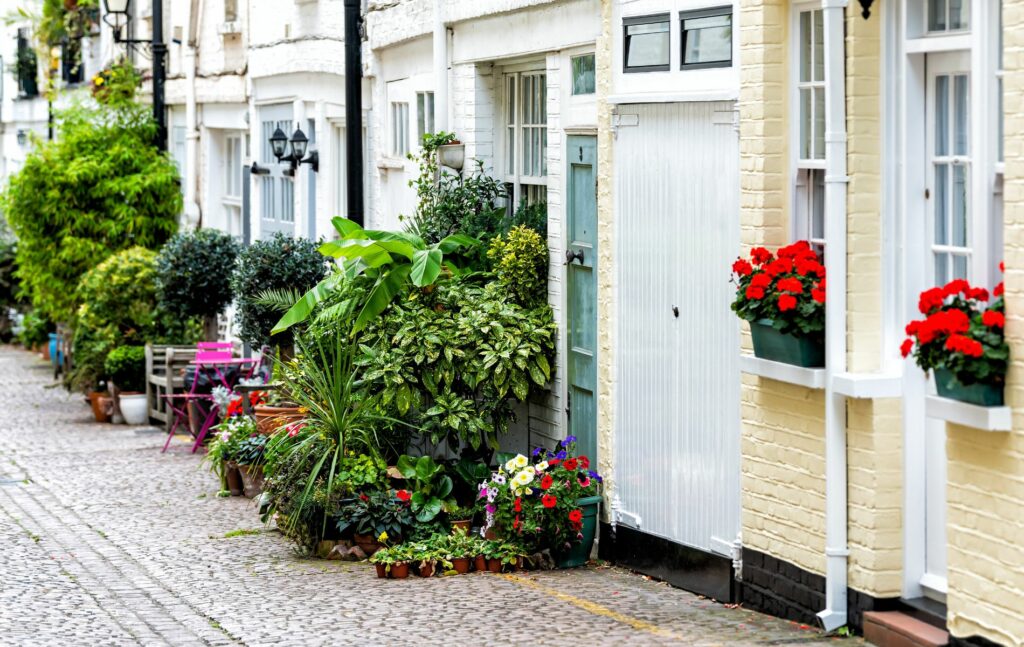
Belgravia
Belgravia, situated to the east of Chelsea, is one of London’s grandest and most exclusive neighbourhoods, with many of the city’s wealthiest residents calling the area home.
Rows of mews houses, almost hidden from view in secluded streets, can be found behind Belgravia’s elegant terraces of late Georgian white stucco townhouses.
Belgravia’s properties are either residential or are foreign embassies or business headquarters. Shopping opportunities can be found in the adjacent areas of Knightsbridge and Chelsea.
Notting Hill
Notting Hill is famous for its pastel-coloured houses and cosmopolitan atmosphere, with high-street shopping along Notting Hill Gate and smart boutiques in Westbourne Grove.
The area is adjacent to Kensington Gardens and Holland Park, offering easy access to tranquil open spaces.
Notting Hill is also well-known for its carnival, one of the largest street carnivals in Europe, held annually over the August bank holiday weekend attracting over a million visitors.
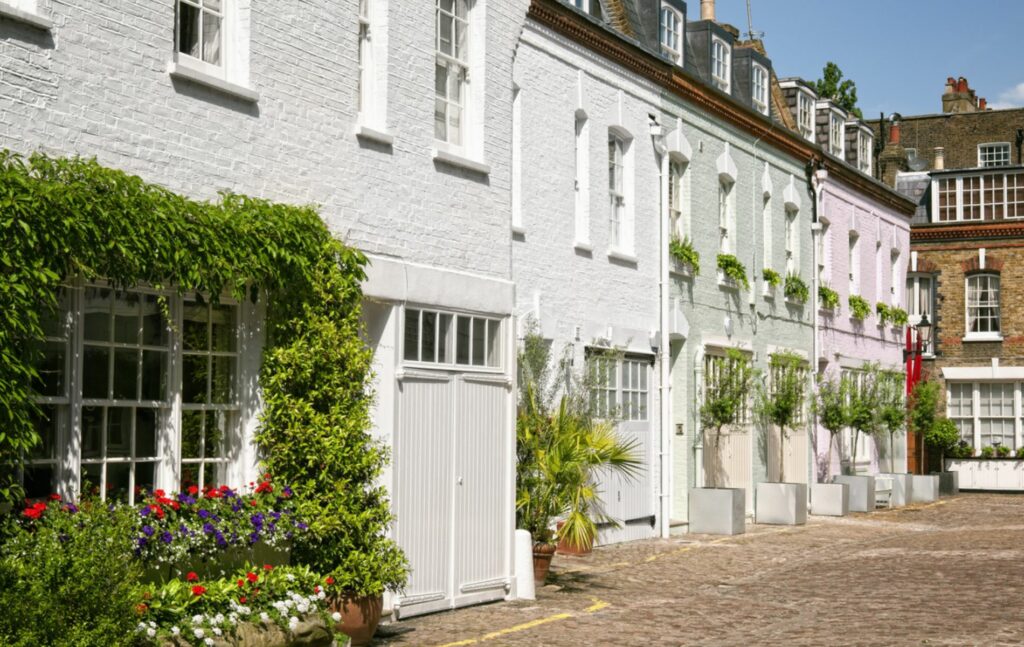
Marylebone
Marylebone is a chic area of London known for its beautiful Georgian architecture and as a shopping haven. Marylebone High Street and its side streets offer a high-end shopping experience and a destination for those who enjoy fine dining.
Mews houses in Marylebone are often located in secluded, leafy streets, giving their residents a peaceful retreat in the heart of the city.
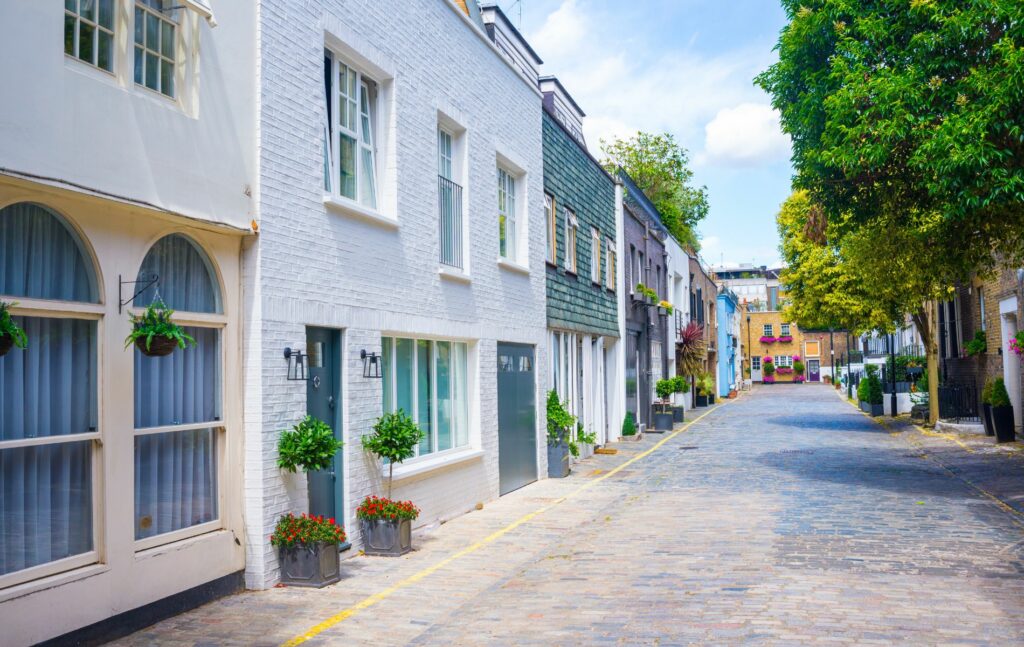
Finding a Mews House to Buy
Living in a London mews house offers a home environment that appeals to many but, as there are only a limited number, finding one to buy or rent can be challenging.
Factors to consider include location, size, and whether to choose a traditional or contemporary style. London mews houses offer a range of options so it’s wise to have clear search criteria.
Looking to buy or rent a mews house can be extremely competitive.
In London’s most desirable postcode areas, it is advisable to be prepared with a solicitor instructed or references obtained, have finances in place, and be ready to act quickly to make a competitive offer to secure the property.
Leasehold or Freehold?
It is important to consider the property’s tenure before making a purchase. Some mews houses are sold with a leasehold tenure, so the buyer will only own the property for a set number of years and the leaseholder will be required to pay ground rent and service charges to the freeholder.
Some mews houses are sold with a freehold tenure or share of freehold; many mews streets or courtyards are unadopted, which means any repairs, maintenance, or cleaning are paid for by all the residents, usually via a fund collected and administrated by a management company.
London Mews Houses
Whether you are looking for a luxurious property in Belgravia or a bohemian retreat in Notting Hill, London mews houses can satisfy most tastes and offer those residing in them an appealing and exclusive living experience that is hard to replicate anywhere else.
For professional guidance on locating your perfect home, please do contact us.
